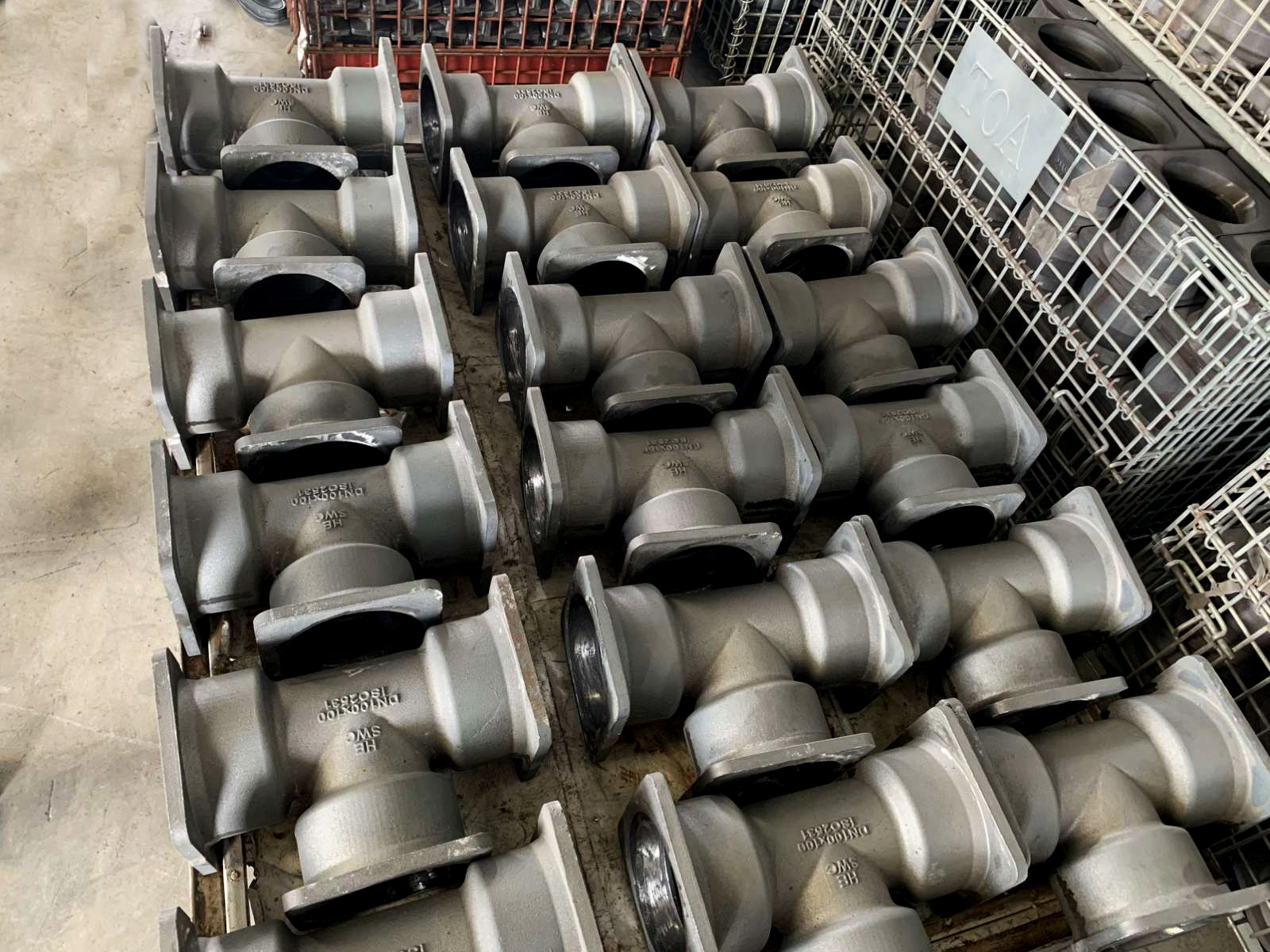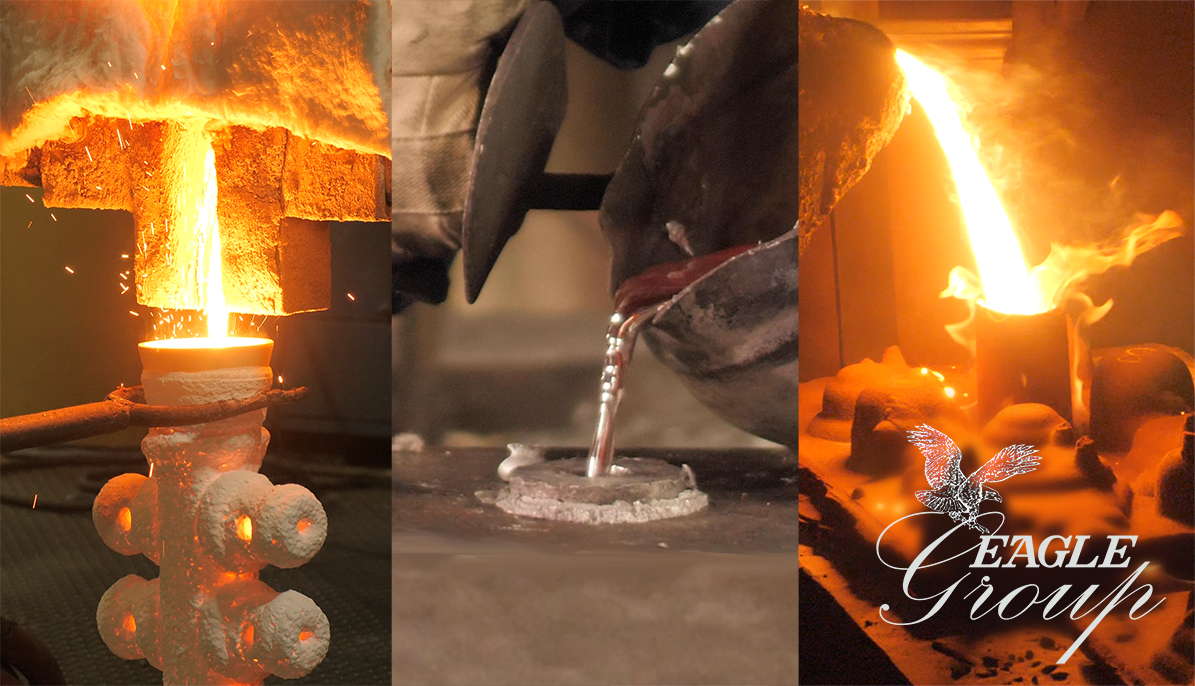Understanding the technology behind Wisconsin Aluminum Foundry and its success in casting excellence
Comprehending the Metal Castings Process: A Comprehensive Guide for Beginners
The Metal Casting procedure is a basic method in making that transforms molten steel into solid types. Novices need to comprehend the different techniques entailed, such as sand casting and pass away spreading. Comprehending the products, style concepts, and precaution is similarly vital. Each element plays a vital function in achieving successful outcomes. As one navigates these ins and outs, the concern of exactly how to enhance each step for improved outcomes becomes significantly essential.
The Basics of Steel Casting
Metal Casting has advanced over centuries, its basic principles remain important and constant to the production procedure. At its core, Metal Casting entails the transformation of liquified metal right into solid objects through numerous methods. The process starts with the creation of a mold, which defines the form of the end product. As soon as the mold is prepared, steel is heated to its melting point and poured into the dental caries. After cooling, the steel strengthens, taking the shape of the mold and mildew.
There are numerous casting methods, including sand casting, investment casting, and pass away spreading, each with unique advantages and applications. The selection of technique depends on elements such as production volume, product type, and preferred accuracy. When cast, the end product may go through extra processes like machining or surface area treatment to accomplish the required coating and specs. Comprehending these fundamentals is crucial for any person interested in the area of Metal Casting.

Recognizing Products Made Use Of in Steel Casting
Products play an essential duty in the Metal Casting procedure, affecting the end product's buildings and performance. Numerous metals are utilized, consisting of light weight aluminum, steel, bronze, and iron, each offering distinct attributes matched for details applications. Aluminum is light-weight and corrosion-resistant, making it optimal for automotive components. Iron, especially cast iron, is preferred for its excellent wear resistance and toughness. Steel offers high toughness and versatility, often used in hefty machinery components. Bronze, known for its corrosion resistance and machinability, is typically used in marine applications.
In addition to the steels, different casting products, such as sand, plaster, and ceramic, are made use of to create mold and mildews. Sand spreading, the most common approach, uses silica sand as a result of its thermal security and capability to develop complex forms. Plaster and ceramic molds provide better information however may call for more complex processes. The option of products directly affects the efficiency, expense, and top quality of the casting operation.
The Layout Refine: From Idea to Plan
The style procedure in Metal Casting begins with the initial concept growth, where concepts are produced and examined. This is adhered to by the application of CAD modeling techniques, enabling accurate visualizations of the design. Finally, the plan completion steps assure that all requirements are accurately documented for manufacturing.
Preliminary Principle Growth
Initial idea advancement marks a crucial stage in the Metal Casting procedure, where concepts change right into substantial designs. Throughout this phase, developers work together with stakeholders and designers to brainstorm and refine preliminary ideas. They consider elements such as performance, appearances, and manufacturability, ensuring that the layout fulfills the needed requirements and performance requirements. Illustrations and outlines are created to picture the concepts, enabling for initial analyses of expediency and cost-effectiveness. This stage additionally includes recognizing products and potential casting methods that line up with the layout goals. Inevitably, initial concept advancement prepares for a thorough blueprint, assisting the succeeding stages of the casting process and making sure an effective shift from concept to fact.
CAD Modeling Techniques
Transforming concepts right into exact layouts, CAD modeling strategies play an essential duty in the Metal Casting procedure. These strategies utilize innovative software to create thorough three-dimensional models that accurately reflect the intended item. By employing devices such as parametric modeling, solid modeling, and surface modeling, developers can control measurements and forms easily. CAD systems likewise help with simulation and evaluation, enabling the identification of possible problems before manufacturing starts. This positive strategy decreases material waste and enhances the layout for manufacturability. Furthermore, CAD designs can be quickly customized, enabling fast models based upon comments. Essentially, CAD modeling functions as the foundation of the style process, bridging the void between initial concepts and the ultimate production-ready layouts.
Plan Finalization Steps
Following the creation of detailed CAD versions, the following phase includes blueprint finalization, which is important in equating electronic layouts right into workable prepare for manufacturing. This process starts with assessing the CAD designs for precision and compliance with click site specifications. As soon as confirmed, the measurements, resistances, and material requirements are diligently outlined to ensure quality. Integrating notes and notes assists communicate important info relating to casting processes, surface area finishes, and assembly requirements. The completed plan goes through browse around this site a rigorous authorization procedure, usually including cooperation with engineers and manufacturing teams to deal with any kind of prospective concerns. After all alterations are made and approvals acquired, the plan is officially released, functioning as the fundamental file for the succeeding phases of Metal Casting, consisting of pattern making and mold and mildew layout.
The Steel Casting Strategies Discussed

Metal Casting techniques include a selection of approaches used to shape molten steel into wanted kinds. These techniques vary according to the kind of material, complexity of the style, and production quantity. Sand casting is one of the most typical approaches, entailing the development of a mold and mildew from sand to hold the molten metal. Investment spreading, or lost-wax spreading, enables elaborate layouts by utilizing a wax pattern that is thawed away. Die casting employs high-pressure shot of liquified metal right into a mold, ideal for automation. Various other techniques consist of irreversible mold and mildew casting, which utilizes reusable molds, and centrifugal spreading, where rotational forces help in filling the mold. Each strategy has its applications and benefits, making it important for manufacturers to choose the ideal technique based upon their particular requirements and demands. Comprehending these methods is vital for anyone associated with the Metal Casting process.
Completing Processes: Enhancing Your Casted Item

Ending up procedures play a crucial duty in improving the top quality and look of casted products. Various surface area therapy techniques, such as sprucing up and finish, are employed to improve sturdiness and looks. Furthermore, quality evaluation approaches assure that the end product fulfills specified criteria and performance requirements.
Surface Area Treatment Strategies
A selection of surface area therapy methods play a crucial function in boosting the quality and durability of casted products. These methods consist of methods such as i thought about this shot blasting, brightening, and coating. Shot blasting successfully removes surface blemishes, improving the practical and visual characteristics of the casting. Sprucing up gives a smooth surface, which is especially vital for attractive applications and parts calling for minimal rubbing. Coating strategies, such as electroplating or powder finishing, deal additional protection versus deterioration and wear, guaranteeing resilience. In addition, surface treatments can improve attachment for subsequent procedures, such as painting or bonding. By using these approaches, manufacturers can achieve premium surface area quality, which is crucial for the performance and life-span of Metal Casting in numerous applications.
High Quality Assessment Approaches
Effective high quality examination techniques are important for ensuring the integrity and efficiency of casted items after the finishing processes. Various techniques are employed to assess the quality of Metal Casting, consisting of visual inspection, dimensional checks, and non-destructive testing (NDT) Aesthetic examination enables the recognition of surface area problems, while dimensional checks ensure that products fulfill defined tolerances. NDT methods, such as ultrasonic screening and radiographic evaluation, give deeper insights right into internal honesty without harming the spreadings. Furthermore, mechanical testing, such as tensile and hardness examinations, examines material residential or commercial properties - Aluminum Foundry. By employing a mix of these techniques, producers can enhance item top quality and dependability, eventually causing higher consumer satisfaction and lowered production expenses
Safety Considerations in Metal Casting
While the Metal Casting procedure provides many benefits, it additionally provides a variety of safety dangers that should be thoroughly taken care of. Workers in casting centers are exposed to high temperatures, liquified steels, and unsafe materials, which can bring about serious injuries if proper precautions are not taken. Individual safety equipment (PPE) such as heat-resistant handwear covers, encounter shields, and safety clothing is essential to reduce threats.
Additionally, the existence of fumes and dirt requires correct ventilation systems to ensure air top quality - Wisconsin Aluminum Foundry. Regular training on security methods is necessary for all staff members to recognize potential risks and react successfully. Emergency situation treatments need to be established, consisting of fire safety measures and emergency treatment availability. Maintenance of devices and appropriate handling of products better contribute to a much safer working setting. By focusing on these safety factors to consider, Metal Casting operations can shield their workforce and keep reliable manufacturing procedures
Regularly Asked Inquiries
What Are the Environmental Effects of Metal Casting?
Metal Casting can result in environmental effects such as air and water contamination, source deficiency, and power intake. In addition, incorrect waste administration and exhausts from factories add to environmental disruptions and wellness dangers for neighboring areas.
Just how Do I Pick the Right Steel for Casting?
To choose the right metal for spreading, one have to think about variables such as mechanical properties, corrosion resistance, thermal conductivity, and price. Reviewing the desired application and ecological conditions is vital for optimal selection.
What Are the Usual Issues in Metal Casting?
Typical defects in Metal Casting include porosity, shrinkage, sand addition, and misruns. These problems often develop from inappropriate product selection, inadequate layout, or defects in the spreading procedure, impacting the last item's top quality and performance.
Just How Can I Boost My Metal Casting Skills?
To enhance Metal Casting skills, one need to practice constantly, research spreading techniques, analyze previous tasks for issues, seek responses from experienced casters, and constantly explore different materials and techniques to improve efficiency and understanding.
What Is the Expense of Beginning a Metal Casting Business?
Beginning a steel spreading business commonly needs an initial financial investment of $5,000 to $50,000, depending on tools, materials, and center expenses. Variables like area and scale can substantially influence general start-up expenditures.
The Metal Casting procedure is a basic strategy in making that changes molten metal right into solid kinds. Beginners have to realize the numerous methods involved, such as sand spreading and pass away casting. There are several casting methods, including sand casting, investment casting, and pass away casting, each with special advantages and applications. Financial investment casting, or lost-wax spreading, permits for detailed designs by using a wax pattern that is thawed away. Other methods consist of long-term mold spreading, which utilizes reusable molds, and centrifugal casting, where rotational forces help in filling up the mold and mildew.